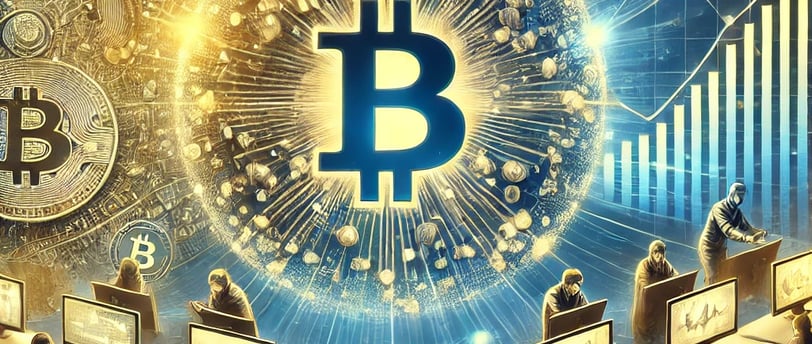Top crypto news that you won't want to miss. Visit Daily For More insights to grow your wallet
Everything You Need to Know About XRP: The Future of Digital Currency
1/12/20252 min read


Introduction to XRP
XRP is a digital asset designed for use within the Ripple network, which facilitates real-time gross settlement systems. Originally launched in 2012, it was created to enable quicker and more cost-effective cross-border transactions compared to traditional banking systems. With its growing acceptance among financial institutions, XRP has emerged as a viable alternative to conventional currencies.
The Technology Behind XRP
XRP operates on a unique consensus algorithm, which differs significantly from other cryptocurrencies that rely on a Proof of Work or Proof of Stake mechanism. This consensus model allows XRP to settle transactions in approximately 3-5 seconds, making it one of the fastest cryptocurrencies available. The underlying protocol, known as the XRP Ledger (XRPL), is designed to be scalable and eco-friendly, which is an increasingly important aspect in the current climate of environmental awareness.
Benefits and Use Cases of XRP
One of the premier benefits of using XRP is its liquidity. Financial institutions can utilize XRP to bridge the gap between different fiat currencies, improving the efficiency of international transactions. Furthermore, the low transaction fees associated with XRP make it an appealing option for remittances. As more banks and organizations begin to adopt XRP, its position as a key player in the financial sector is likely to strengthen.
Additionally, XRP has potential use cases beyond just facilitating cross-border payments. It can be applied in various sectors, including micro-payments, supply chain finance, and even in the field of smart contracts. The flexibility of XRP makes it a promising asset for a wide range of digital financial solutions.
Challenges Facing XRP
Despite its advantages, XRP faces several challenges. Regulatory scrutiny has been a significant issue, as debates continue regarding whether XRP should be classified as a security or a currency. The ongoing litigation between Ripple Labs, the company behind XRP, and the U.S. Securities and Exchange Commission has created uncertainty around its future. Furthermore, the competitive landscape of digital currencies challenges XRP's ability to maintain its market relevance amidst an ever-evolving industry.
Conclusion
In conclusion, XRP stands as a versatile digital asset with the potential to revolutionize the way we view and conduct financial transactions. Its rapid transaction times, low costs, and wide applicability present a compelling case for its adoption across various sectors. However, for XRP to reach its full potential, it must navigate the complex regulatory landscape and position itself favorably against emerging competitors. As the digital currency space continues to evolve, XRP may very well play a pivotal role in the future of finance.

